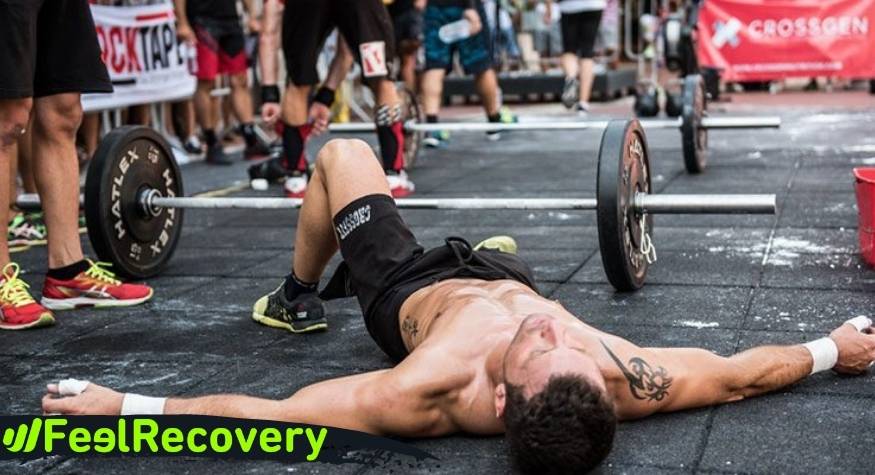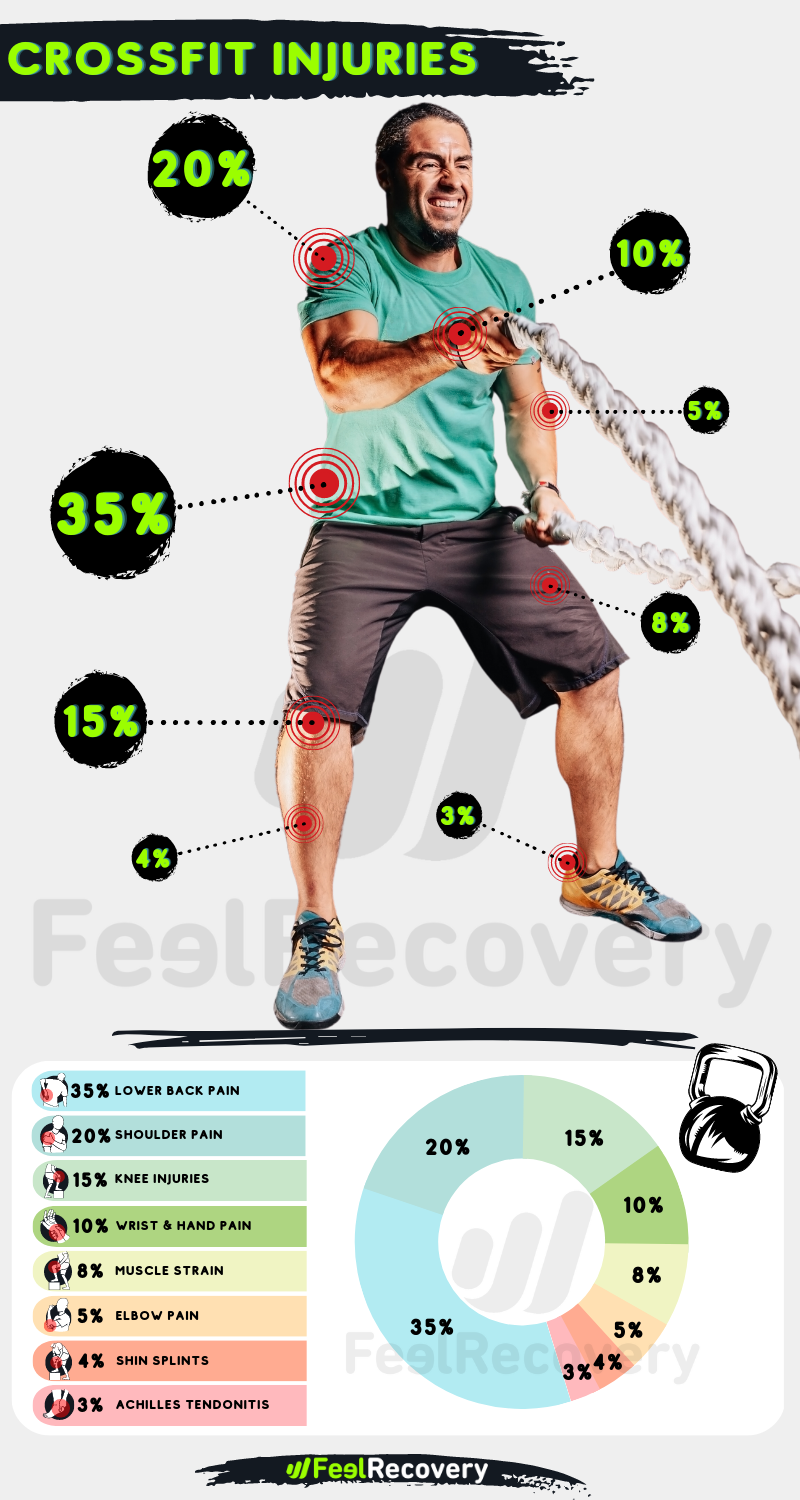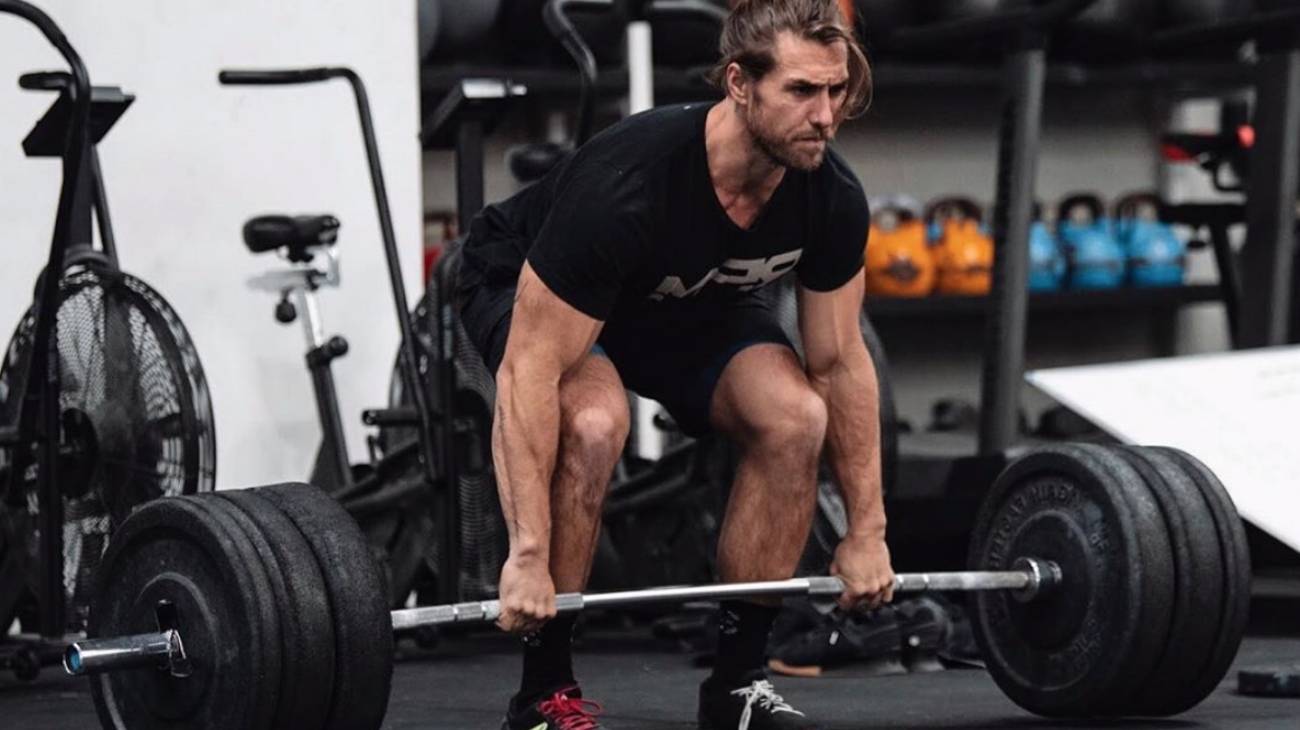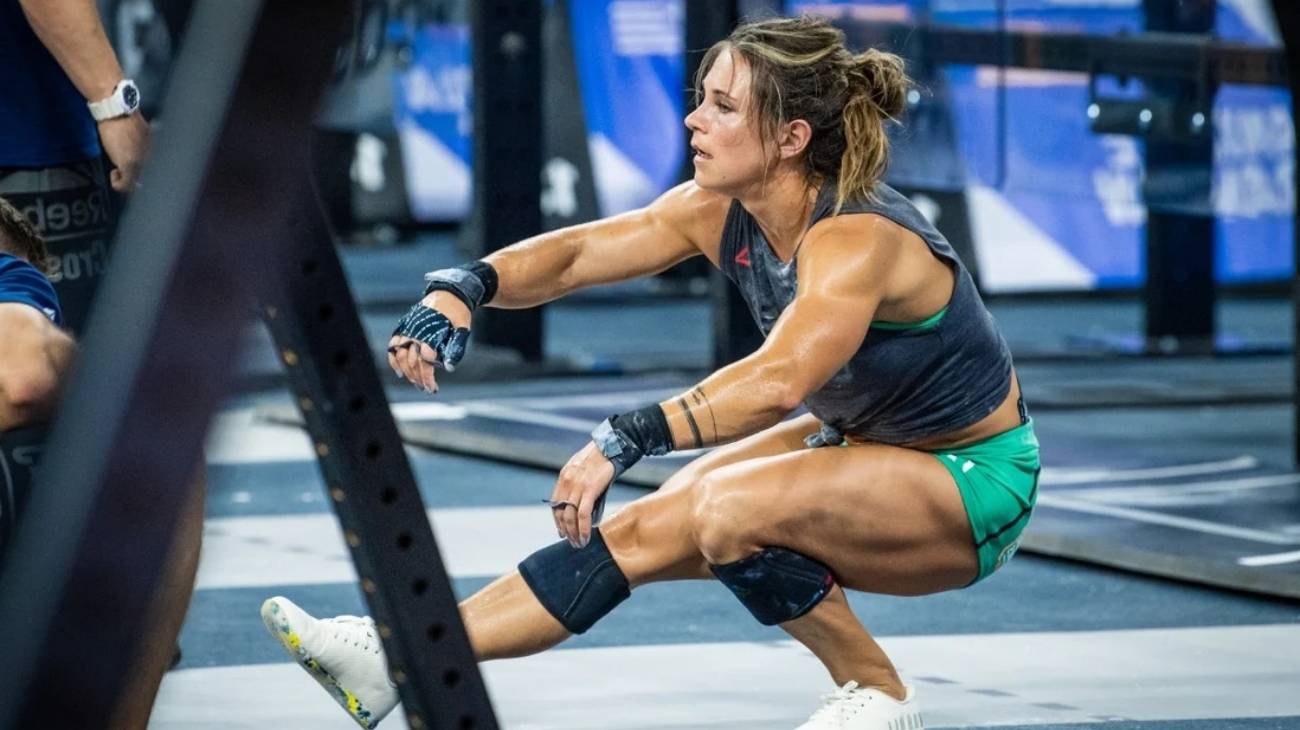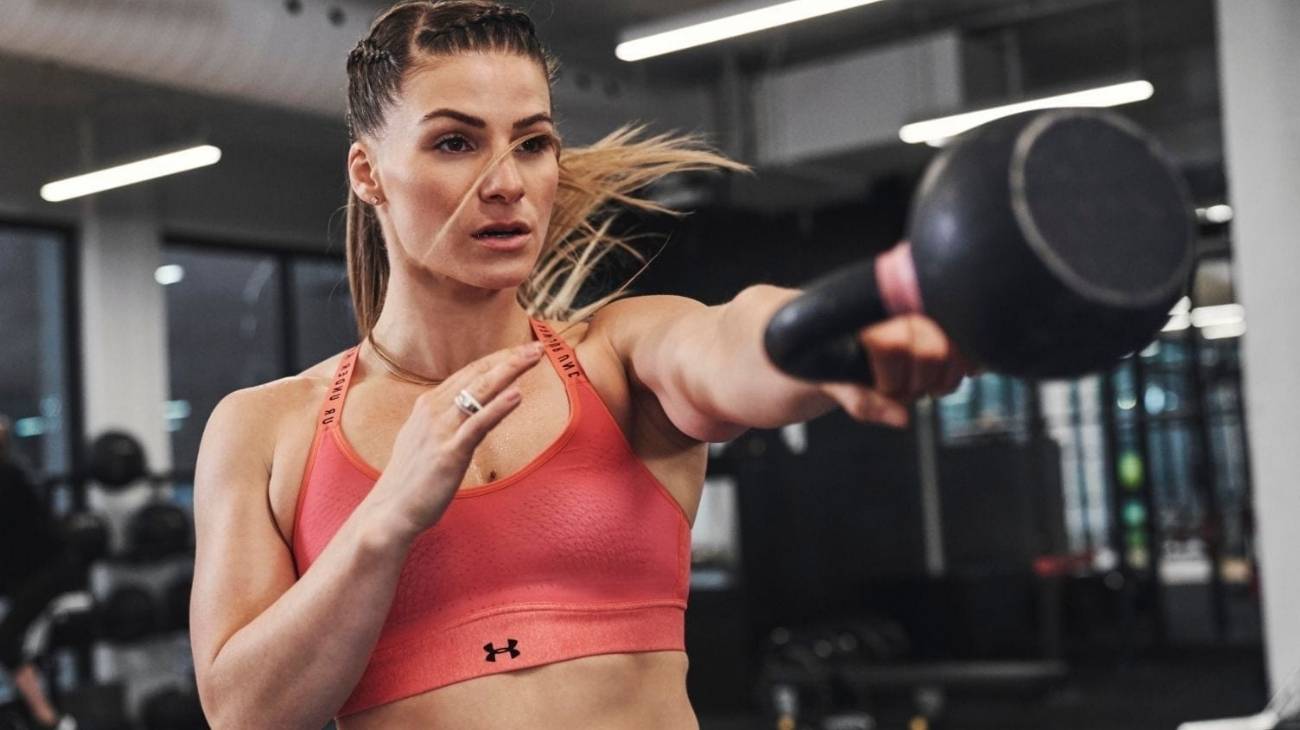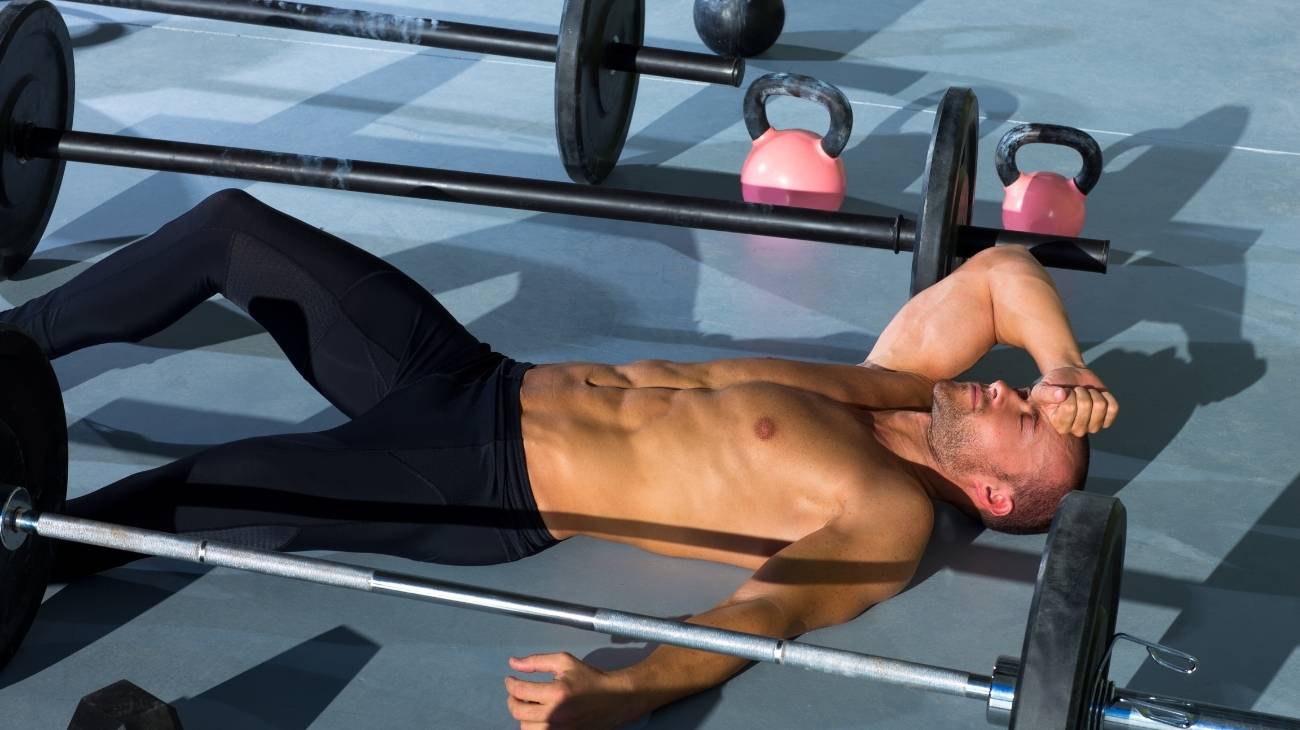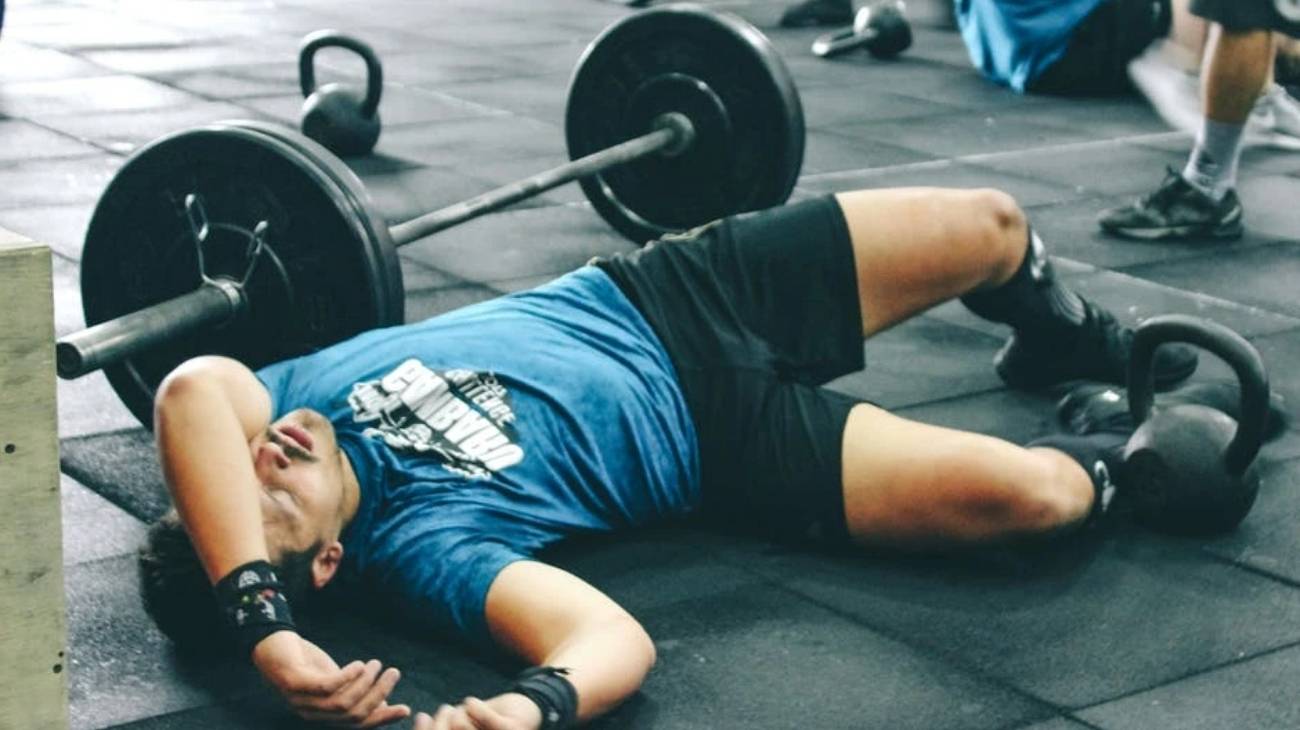Crossfit is a type of high-intensity training that combines different disciplines of resistance, flexibility and balance to form a high-performance exercise programme for physical conditioning. It is currently one of the most inclusive and trendy sports that generates great results in those who practice it.
Due to the different disciplines that are executed when doing Crossfit and its high physical demand, combined with our fitness and a low deficiency in our technique, we can suffer different types of injuries. In this article we will find out which are the most common injuries and the prevention methods to use before and after exercising in this sport.
What are the most common types of injuries when we practice Crossfit?
In the world of Crossfit, you can suffer injuries as a result of pushing your body to the maximum, which is normal in this type of high-performance sport. Most injuries arise due to the technique with which the exercises are performed.
Below, we will show you the most frequent injuries when practising Crossfit.
- Ankle sprain: this is a sprain that generates an unnatural movement of the ankle and causes the ligaments and soft tissues of the joint to overstretch and end up injured. It can happen because most functional crossfit workouts require a lot of mobility, and if we don't execute them correctly we can end up causing this ailment.
- Tendonitis: Tendonitis is the inflammation of a tendon, which causes a lot of pain in the joint where it is located. This is very common in crossfit because elbows, knees and shoulders are usually overused in almost any exercise circuit.
- Bursitis: this is another injury that focuses on the joints, and consists of inflammation of the bursae that are responsible for absorbing the impact of the joints. It usually occurs in the shoulder and knees, which are usually the most exposed to impact.
- Muscle overload: occurs when we overuse a muscle without giving it rest, causing it to become inflamed and need rest in order to recover. This is common in novice crossfitters who want to achieve results as quickly as possible without considering that muscles need to regenerate in order to get stronger.
- Low back pain: This injury refers to an ailment in the lower back, which limits the ability to bend at the waist without pain. It is very common from doing exercises such as deadlifts the wrong way.
Best products for Crossfit injury recovery
Bestseller
-
2 Elbow Compression Sleeve (Black/Gray)
£20,95 -
2 Elbow Compression Sleeve (Green/Navy)
£20,95 -
2 Elbow Compression Sleeve (Pink/Bordeaux)
£20,95 -
2 Knee Compression Sleeve (Black/Gray)
£20,95 -
2 Knee Compression Sleeve (Green/Navy)
£20,95 -
2 Knee Compression Sleeve (Pink/Bordeaux)
£20,95 -
2 Thigh Compression Sleeve (Green/Navy)
£20,95 -
Microwave Wheat Bag for Back Pain Relief (Extra Large) (Hearts)
£24,95 -
Microwave Wheat Bag for Back Pain Relief (Extra Large) (Oxford)
£24,95 -
Microwave Wheat Bag for Back Pain Relief (Extra Large) (Sport)
£24,95 -
Microwave Wheat Bag for Neck & Shoulder Pain Relief (Hearts)
£24,95 -
Microwave Wheat Bag for Neck & Shoulder Pain Relief (Oxford)
£24,95 -
Microwave Wheat Bag for Neck & Shoulder Pain Relief (Sport)
£24,95 -
Microwave Wheat Bag for Neck Pain Relief (Hearts)
£20,95 -
Microwave Wheat Bag for Neck Pain Relief (Oxford)
£20,95 -
Microwave Wheat Bag for Neck Pain Relief (Sport)
£20,95 -
Microwaveable Wheat Bag for Pain Relief (Hearts)
£20,95 -
Microwaveable Wheat Bag for Pain Relief (Oxford)
£20,95 -
Microwaveable Wheat Bag for Pain Relief (Sport)
£20,95
-
2 Calf Compression Sleeve (Black/Gray)
£20,95 -
2 Calf Compression Sleeve (Green/Navy)
£20,95 -
2 Calf Compression Sleeve (Pink/Bordeaux)
£20,95 -
2 Thigh Compression Sleeve (Black/Gray)
£20,95 -
2 Thigh Compression Sleeve (Pink/Bordeaux)
£20,95 -
Back Support Belt (Black)
£39,95 -
Back Support Belt (Green)
£39,95 -
Back Support Belt (Pink)
£39,95 -
Foot Massage Roller for Plantar Fasciitis (Black)
£20,95 -
Foot Massage Roller for Plantar Fasciitis (Green)
£20,95 -
Foot Massage Roller for Plantar Fasciitis (Pink)
£20,95 -
Ice Massage Roller Ball (Black)
£34,95 -
Ice Massage Roller Ball (Green)
£34,95 -
Ice Massage Roller Ball (Pink)
£34,95 -
Shoulder Support Brace (Black)
£24,95 -
Shoulder Support Brace (Green)
£24,95 -
Shoulder Support Brace (Pink)
£24,95 -
Soft Density Foam Roller for Recovery (Black)
£34,95 -
Soft Density Foam Roller for Recovery (Green)
£34,95 -
Soft Density Foam Roller for Recovery (Pink)
£34,95 -
Sport Compression Socks (1 Pair) (Black/Gray)
£20,95 -
Sport Compression Socks (1 Pair) (Green/Navy)
£20,95 -
Sport Compression Socks (1 Pair) (Pink/Bordeaux)
£20,95
List of injury prevention methods in Crossfit
The best way to cure an injury is by prevention, as this way our body will not suffer any kind of serious sequelae. This is the only way to guarantee that we will not feel pain and to minimise the chances of going to the operating theatre as much as possible.
Warming up properly
To begin an activity as demanding as Crossfit, not only should we warm up well, but we should also do stretches that integrate and provide joint mobility, in order to activate the nervous system and our muscles.
Exercises such as burpees, jumping jacks, Bulgarian squats, are ideal to warm up and start working legs, buttocks and shoulders. Doing a general warm-up to increase body temperature and then a specific warm-up that will include the muscles that will be involved during the training session, remember that the warm-up should not last more than 10-15 minutes, nor be strenuous.
Finish stretching with a cool down
Stretching is essential after exercise to reduce the muscle tension generated, in addition to the physiological and psychological benefits. To do them we must start with a static stretch, maintaining the position without sudden movements.
Breathe deeply while stretching, this generates pleasure, eliminates tension and helps to eliminate substances such as lactic acid, which accumulate in the body during intense physical activity. The time for each stretch can vary, there are experts who state that it is best to do it briefly, between 10 and 30 seconds.
Good nutrition and hydration
Hydration is essential to avoid sports injuries, because a well-hydrated muscle is more flexible and resistant. It is important to be well hydrated throughout the day and not only at the time of training. Drink water regularly, avoiding the sensation of thirst, as this will be an indicator of dehydration, and increase mineral water intake in hotter environments. Avoid drinking water during times of high respiratory rate, as we would be depriving our body of oxygen when it needs it most.
The main foods to improve our body composition are legumes (beans, oats, peanuts, lentils, etc.) as they are rich in calcium and magnesium, this type of food helps muscle relaxation and prevents cramps. Nuts (walnuts, hazelnuts, almonds, among others) are rich in protein and vitamins, which have antioxidant properties.
It should be noted that Omega 3 has a positive effect on aerobic performance and its anti-inflammatory effect improves and prevents joint and ligament problems. Omega 3 fatty acids can be found in fish, shellfish, eggs and vegetables in general.
Improve your physical condition
Although Crossfit is suitable for most people, it is advisable to consult a doctor if it is appropriate to practice this type of exercise, especially if you suffer from a chronic illness.
Crossfit is a training that has multiple exercises according to age and physical condition, so it is important to have the attitude and determination to do it, and to constantly work on our physical condition to avoid injuries
Sports massage
Sports massage is important when it comes to relieving tension and preventing injuries. There are multiple benefits before and after training, thus improving our performance. Some of the benefits are: stimulates the muscles before any training, releases toxins, softens and stretches the muscle fibres, reduces scarring of muscle tissue and relaxes muscle tension after each practice, thus fulfilling a regenerative function.
It is recommended to have a lymphatic drainage massage. This technique improves blood circulation in the area being worked on, facilitating the elimination of waste and the arrival of new, oxygenated blood, allowing for proper recovery and good functioning. In addition to applying other types of massage to reduce tension and avoid injuries. All this can be achieved through a physiotherapist.
Use of heat and cold therapy
The use of heat or cold on a temporary basis can reduce stiffness and pain, making injury less likely. Cold reduces blood flow, preventing further inflammation in an affected area and heat dilates blood vessels, recommended for chronic pain as it generates more blood flow allowing faster healing. It is advisable to apply heat before a workout, as it will increase our flexibility, which helps us to avoid injuries.
Use of compression garments
This is a type of tight-fitting sportswear that puts pressure on our muscles. This pressure improves circulation, which in turn improves blood flow, oxygenates the tissues and as a result reduces pain and contributes to muscle recovery, thus avoiding stiffness in the muscles.
In addition, the use of compression clothing during training will give us greater stability and warmth to our muscles, avoiding chafing and improving our performance.
Use of acupressure therapies
This is a type of massage, where the thumbs, fingers and palms of the hands are used to apply pressure to different parts of the body, called acupressure points. It shares similarities with acupuncture that come from traditional Chinese medicine. It produces benefits such as relaxing muscles and joints, soothing the aches and pains resulting from physical exercise and can be used to prevent repetitive strain injuries.
Use of thermotherapy and cryotherapy
Cryotherapy or cold therapy is the local or general use of low temperatures in medical therapy. If applied over a long period of time, it has an analgesic effect on the muscles, reducing muscle tone and relieving muscle spasms. If the application is short, it causes muscular stimulation and is often used before high intensity exercise.
Thermotherapy is the application of heat by means of thermal agents. It increases muscle extensibility and relieves muscle spasms (contractures).
Use of good equipment
In a Crossfit gym you can find ropes, kettlebells, dumbbells, barbells, etc. But there is always a series of equipment that helps to train better and avoid injuries. The use of weightlifting shoes are recommended to perform the movements and Olympic lifts, as they have a small heel in the heel area that facilitates stability.
Adequate equipment will allow us to train and achieve better results, for example, wearing clothes with natural cotton fibres favours the regulation of body temperature, on the other hand, using clothes made of synthetic fabrics, which are too tight, prevents correct transpiration. The use of a lumbar belt prevents injuries when lifting heavy loads. In addition, using the right shoes capable of absorbing jumps protects the joints, or the most favourable shoes for movements with greater freedom of movement.
References
- Klimek, C., Ashbeck, C., Brook, A. J., & Durall, C. (2018). Are injuries more common with CrossFit training than other forms of exercise?. Journal of sport rehabilitation, 27(3), 295-299. https://journals.humankinetics.com/view/journals/jsr/27/3/article-p295.xml
- Alekseyev, K., John, A., Malek, A., Lakdawala, M., Verma, N., Southall, C., ... & Ross, M. (2020). Identifying the most common CrossFit injuries in a variety of athletes. Rehabilitation process and outcome, 9, 1179572719897069. https://journals.sagepub.com/doi/pdf/10.1177/1179572719897069
- Ángel Rodríguez, M., García-Calleja, P., Terrados, N., Crespo, I., Del Valle, M., & Olmedillas, H. (2022). Injury in CrossFit®: a systematic review of epidemiology and risk factors. The Physician and Sportsmedicine, 50(1), 3-10. https://www.tandfonline.com/doi/abs/10.1080/00913847.2020.1864675
- Hopkins, B. S., Cloney, M. B., Kesavabhotla, K., Yamaguchi, J., Smith, Z. A., Koski, T. R., ... & Dahdaleh, N. S. (2019). Impact of CrossFit-related spinal injuries. Clinical journal of sport medicine, 29(6), 482-485. https://journals.lww.com/cjsportsmed/Abstract/2019/11000/Impact_of_CrossFit_Related_Spinal_Injuries.8.aspx
- Hak, P. T., Hodzovic, E., & Hickey, B. (2022). The nature and prevalence of injury during CrossFit training. The Journal of Strength & Conditioning Research. https://journals.lww.com/nsca-jscr/abstract/9000/the_nature_and_prevalence_of_injury_during.97557.aspx
- Meyer, J., Morrison, J., & Zuniga, J. (2017). The benefits and risks of CrossFit: a systematic review. Workplace health & safety, 65(12), 612-618. https://journals.sagepub.com/doi/pdf/10.1177/2165079916685568
- da Costa, T. S., Louzada, C. T. N., Miyashita, G. K., da Silva, P. H. J., Sungaila, H. Y. F., Lara, P. H. S., ... & Arliani, G. G. (2019). CrossFit®: Injury prevalence and main risk factors. Clinics, 74. https://www.scielo.br/j/clin/a/4FtbB77jTQtQgPmt4KrBjJy/
- Montalvo, A. M., Shaefer, H., Rodriguez, B., Li, T., Epnere, K., & Myer, G. D. (2017). Retrospective injury epidemiology and risk factors for injury in CrossFit. Journal of sports science & medicine, 16(1), 53. https://www.ncbi.nlm.nih.gov/pmc/articles/PMC5358031/
- Tafuri, S., Salatino, G., Napoletano, P. L., Monno, A., & Notarnicola, A. (2018). The risk of injuries among CrossFit athletes: an Italian observational retrospective survey. The Journal of sports medicine and physical fitness, 59(9), 1544-1550. https://europepmc.org/article/med/30421876
- Weisenthal, B. M., Beck, C. A., Maloney, M. D., DeHaven, K. E., & Giordano, B. D. (2014). Injury rate and patterns among CrossFit athletes. Orthopaedic journal of sports medicine, 2(4), 2325967114531177. https://journals.sagepub.com/doi/pdf/10.1177/2325967114531177

